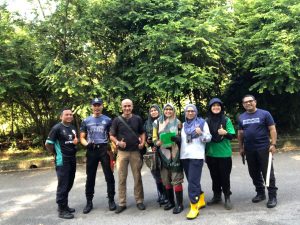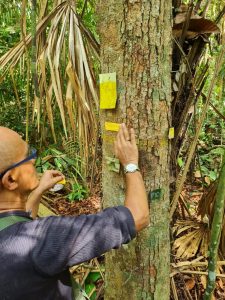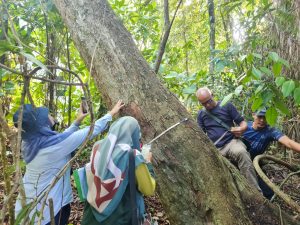
The Dipterocarpus semivestitus, or Keruing Padi in Malay, is a member of the Dipterocarpaceae family and is native to Peninsular Malaysia, especially the Perak region. The Malaysia Plant Red List and the International Union for Conservation of Nature’s (IUCN) Red List of Threatened Species now classify this species as Critically Endangered. The species, usually found in lowland forests on swampy ground, is seriously threatened, so immediate conservation action is required. The population’s critical position highlights the necessity of thorough population monitoring and coordinated actions to promote its recovery and restoration. It is critical to take strategic conservation measures to protect Dipterocarpus semivestitus from further decline and possible extinction, given its ecological relevance and the risk of population decrease.
Given that Keruing Padi is classified as endangered, it is imperative that environmental authorities and conservationists work together to take appropriate measures that will protect the species. The initiative is aligned with SDG 13, SDG 15, and university PI135. This could involve efforts to preserve habitat, reforestation initiatives, and implementing focused conservation plans that are adapted to the unique biological requirements of the species. Stakeholders may support the preservation of biodiversity and the general health of the ecosystem, in which Dipterocarpus semivestitus is an essential component, by giving priority to these efforts.

Therefore, the team of Green Campus Unit 4, together with the Department of Landscape Architecture and Auxilary team of UiTM Perak has initiated a revisit survey of Keruing Padi on the UiTM Perak Campus. The survey conducted on 15 November 2023 at 9.00 a.m. involved 10 staff led by LAr Dr. Helmi Hamzah; the certified arborist on campus. The revisit has observed and re-evaluated the condition of 6 nos Keruing Padi located in zone Forest 1; Seri Iskandar campus. This revisit survey will continuously be conducted to progressively monitor this valuable endangered species on campus.


In conclusion, revisiting the Keruing Padi condition is not merely a scientific endeavor but a crucial step toward the species’ survival. The updated information derived from such a survey is indispensable in shaping adaptive and effective conservation strategies. By embracing the dynamism of ecosystems and the evolving threats faced by Keruing Padi, this initiative paved the way for a more resilient and sustainable approach to the conservation of this endangered species.
